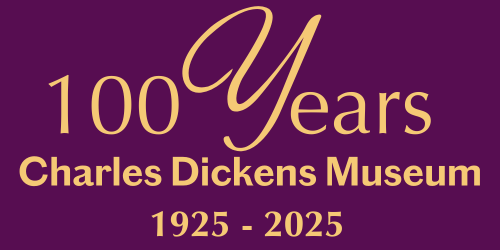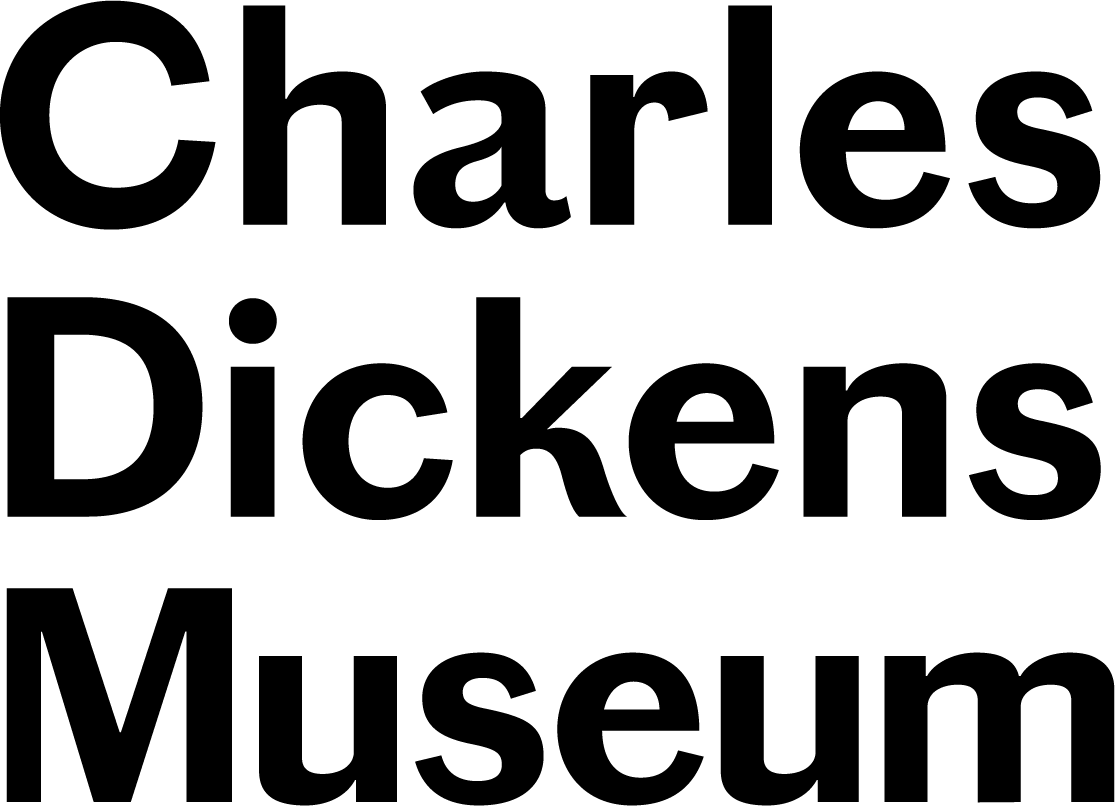Hans Christian Andersen: The Eccentric Guest by Ann Philippas
Hans [Christian] Andersen slept in this room for five weeks – which seemed to the family AGES!
So declared a note which Charles Dickens pinned up in his house at Gad’s Hill Place in Kent in July 1857, shortly after Andersen’s visit (1). He was originally only meant to stay with the family for a fortnight at the most. Yet Andersen was “a bony bore, and stayed on and on”, recalled Dickens’s daughter Katey (2).
A souvenir of their friendship resides in the Study here at 48 Doughty Street: it is a copy of Dickens’s book The Chimes which he presented to Andersen ten years earlier. It is a most extraordinary book with an exquisite covering and a beautifully simple and engaging dedication:
Hans Christian Andersen From his friend and admirer Charles Dickens London Jul 1847
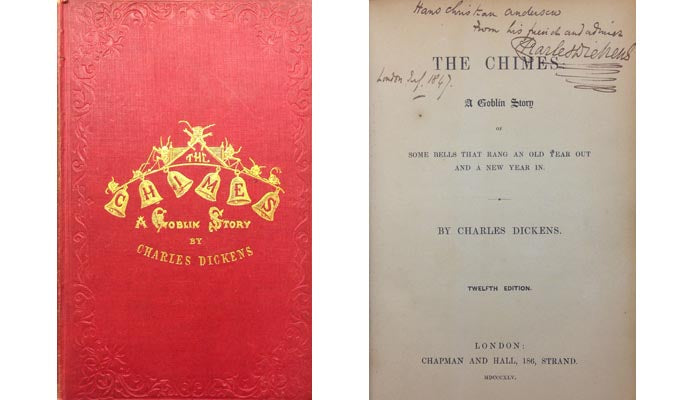
'The Chimes' by Charles Dickens Museum dedicated to Hans Christian Andersen, Charles Dickens Museum Collection
As a Volunteer Room Steward at the Museum, I recently had the singular opportunity of taking it out of the case with the Curator and closely inspecting it for myself. Holding it in my hands, it was hard to believe that the giver and the recipient were who they are said to be. Yet there was still something special about the book which almost made me feel as if it were one of my own from childhood – one of those long forgotten yet not quite so distant memories which have been tucked away on the bookshelf.
Dickens and Andersen are two of my favourite writers. Sadly, the book is the remnant of their fraught relationship. It is a dreadful shame when one thinks of how differently things might have been.
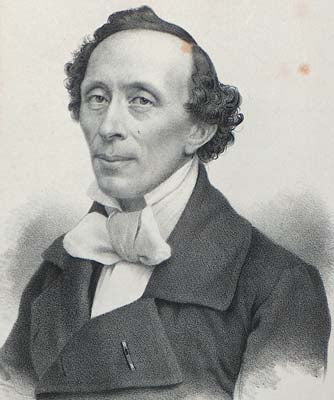
Hans Christian Andersen
But, when Andersen came to stay with the Dickens family in 1857, he had annoyed them right from the start by announcing on the first morning of his visit that it was customary in Denmark for male guests to be shaved by one of the sons of the house. In response Dickens arranged a daily appointment for him with a local barber in Rochester (3).
Andersen also deeply baffled the family when, upon receiving a bad review of one of his books during his visit, he threw himself face down on the lawn and wept inconsolably (4)
When watching Dickens perform his play The Frozen Deep, Andersen was thoroughly pleased to find out from his host that Queen Victoria – who was in the audience with Prince Albert – was aware of his presence (5). Yet Andersen became moody during the party that followed because he was not the centre of attention (6).
Dickens was not wholly unpleasant to Andersen, though it is obvious that he had had enough of him when the time finally came for his departure. Andersen sensed tension in the air before taking his leave and sought solace from him, almost as a child might from a parent (7). Dickens was comparatively civil, though when Andersen returned home he received only one final letter. It had a particularly icy tone of condescension and farewell.
There is no denying that Andersen was a challenging guest. He experienced lifelong social awkwardness, enclosed in his own world, identifying with the characters in his work.
If you have not yet read The Ugly Duckling, Andersen’s book for children, I would strongly recommend it (though I am sure many of you already have). I can recall a Ladybird version of it from when I was small, filled with enchanting illustrations, nearly all of which had a dark, murky, foggy background in them. I never suspected then that Andersen viewed the work as his autobiographical story (8), though the tale did always seem to have a certain poignancy about it.
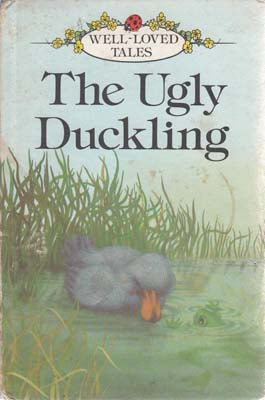
'The Ugly Duckling' by Hans Christian Andersen
Some speculate the story was inspired by a particularly painful episode from his youth. At the age of 14, Andersen left Odense, the city of his birth, and arrived in Copenhagen with the dream of becoming an opera singer. But he was mockingly described as “lanky and awkward, with a big nose, huge hands and feet and a poor crackly voice”. His dream was shattered and he was overcome with sorrow (9).
However, he would later outstrip those who mocked him when he became the famous and much-loved author of fairy tales who wrote:
I never dreamt that so much happiness was possible when I was the Ugly Duckling!
Hans Christian Andersen, The Ugly Duckling
Ann Philippas is an illustrator graduate. She is a Support Worker at the Ladbroke Grove Autism Centre and a Volunteer Floor Steward at the Charles Dickens Museum.
1. Gladys Storey, Dickens and Daughter (Frederick Muller Ltd, 1939).
2. Dickens and Daughter, as above.
3. Letters, vol. 8, p372N; Sir Henry F. Dickens, Recollections (William Heinemann Ltd, 1934)
4. Dickens and Daughter, as above.
5. Hans Christian Andersen’s Diary printed in Elias Bredsdorff, Hans Andersen and Charles Dickens (H. Heffer & Sons Ltd, 1956).
6. Jackie Wullschager, Hans Christian Andersen: The Life of a Storyteller (Chicago UP, 2002).
7. As immediately above.
8. Elias Bredsdorff, Hans Christian Andersen: The Story of his Life and Work 1805-75 (Phaidon, 1975).
9. James Somerville (ed.), Children’s Britannica (Encyclopedia Britannica, 1993).
Museum Blog
This blog takes you behind the scenes at the Charles Dickens Museum, giving fresh insight on everything from discoveries new and old in our collection, to exhibitions, events and learning initiatives.
You’ll be hearing from a variety of Museum staff and volunteers, as well as guest curators, academics, artists and Dickens enthusiasts. Why not join the debate and let us know you thoughts on the latest blog by using our hashtag #CDMBlog
